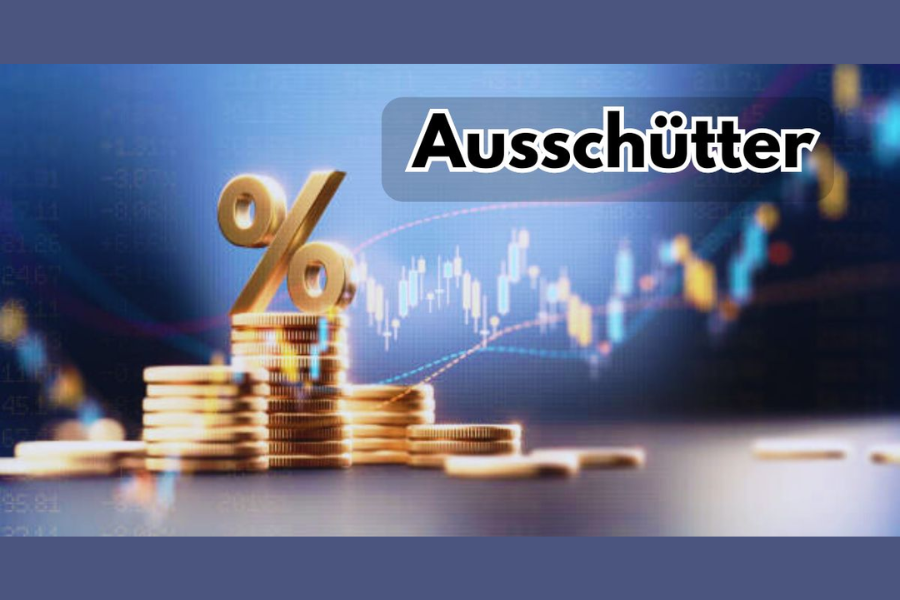Ausschütter 101: Everything You Need to Know About Income Distribution Funds
Introduction
Navigating the complex world of finance requires a solid understanding of various terms and concepts. One such term frequently encountered in discussions about income distribution and dividends is “Ausschütter.” This article aims to provide a comprehensive overview of what Ausschütter means, its significance in the financial landscape, and its impact on investors.
What is Ausschütter?
The term “Ausschütter” is derived from the German word for “distributor.” In financial contexts, it refers to investment funds, particularly mutual funds or exchange-traded funds (ETFs), that regularly distribute income to their shareholders. This income can come from a variety of sources, including capital gains, interest, or dividends generated by the fund’s assets.
Types of Ausschütter
Mechanical Ausschütter: These are devices operated manually or through mechanical means to distribute materials like grains, seeds, or small components in manufacturing processes.
Electronic Ausschütter: These devices are equipped with electronic controls, offering precise distribution and are commonly used in automated industrial processes.
Industrial Ausschütter: Designed for heavy-duty applications, these Ausschütter are used in large-scale industries such as mining, construction, and pharmaceuticals for managing bulk materials.
Importance of Ausschütter in Finance
Role of Ausschütter in Investment Strategies
Ausschütter play a crucial role in various investment strategies, especially those centered around income generation. They provide a predictable cash flow that investors can either reinvest or use to cover living expenses. This makes Ausschütter particularly valuable for retirement planning, where a steady income stream is essential.
Benefits of Ausschütter for Investors
Investors reap several benefits from Ausschütter, including:
Regular Income: Ausschütter offer consistent income distributions, which can provide financial stability and ease the impact of market volatility.
Potential for Capital Appreciation: Besides income, Ausschütter can also contribute to capital gains, enhancing the overall return on investment.
Volatility Cushion: The predictable payouts from Ausschütter can help investors weather economic downturns, thereby strengthening the resilience of their investment portfolios.
Key Features of Ausschütter Funds
Regular Income Distribution: Ausschütter funds are designed to distribute income regularly to investors. This income may include capital gains, interest, or dividends generated by the fund’s assets.
Tax Efficiency: One of the appealing aspects of Ausschütter funds is their potential tax efficiency. Depending on tax laws, the income distributions may be taxed at lower rates compared to reinvested income.
Investment Strategy: Ausschütter funds generally focus on income-generating assets such as dividend-paying stocks, bonds, real estate investment trusts (REITs), or other securities known for regular payouts.
Target Audience: These funds are ideal for investors who need a steady income stream, such as retirees or those seeking regular cash flow from their investments.
How Ausschütter Funds Work
Here’s a step-by-step breakdown of how Ausschütter funds operate:
Income Generation: The fund earns income through dividends, interest, or capital gains from its investment portfolio.
Income Pooling: This income is accumulated within the fund over a specified period.
Distribution: At the end of the distribution period, the pooled income is divided among investors based on their share in the fund. Each investor’s payout is proportional to the number of fund units they own.
Benefits of Investing in Ausschütter Funds
Steady Income: Investors benefit from a regular stream of income, which is particularly advantageous for those needing consistent cash flow.
Diversification: Ausschütter funds typically invest in a diversified portfolio, spreading risk across various securities and sectors.
Professional Management: Managed by professional fund managers, Ausschütter funds offer the advantage of expert investment decisions, potentially enhancing performance.
Tax Advantages: Depending on the investor’s tax jurisdiction, the income distributions may be taxed at favorable rates.
How to Choose the Right Ausschütter
Factors to Consider
- Purpose and Application: Identify the specific needs of your investment strategy.
- Capacity and Size: Ensure the Ausschütter fund aligns with your financial goals and investment capacity.
- Material and Durability: Choose funds that can withstand market conditions and deliver consistent performance.
- Cost and Budget Considerations: Balance between cost and expected returns.
Tips
- Conduct thorough research on different Ausschütter funds.
- Consult with financial experts to determine the best fit for your needs.
- Consider future scalability and how the Ausschütter fund can adapt to changing financial goals.
Installation and Maintenance of Ausschütter
Installation Guide
- Site Preparation: Ensure that the installation site is prepared for the Ausschütter fund’s setup.
- Follow Manufacturer Instructions: Adhere to the provided guidelines for installation.
- Test Run: Perform a test run to ensure everything is functioning correctly.
Maintenance Tips
- Regularly review the fund’s performance and make adjustments as necessary.
- Inspect for changes in financial health and replace or adjust investments as needed.
- Follow a scheduled review plan to ensure the fund continues to meet your financial goals.
How to Identify a Good Ausschütter
Key Characteristics of a Reliable Ausschütter
- Consistent Dividend History: A good Ausschütter has a track record of reliable and increasing dividends.
- Strong Financial Health: Look for Ausschütter with robust financial fundamentals and a solid profitability history.
Metrics to Evaluate Ausschütter Performance
- Dividend Yield: Measures annual dividends as a percentage of the stock price.
- Payout Ratio: Indicates the proportion of earnings distributed as dividends.
- Earnings Growth: Reflects the company’s ability to grow profits over time.
Comparing Ausschütter with Other Financial Instruments
Ausschütter vs. Non-Dividend Paying Stocks
Ausschütter provide regular income, while non-dividend paying stocks reinvest earnings to drive growth. Investors seeking income often prefer Ausschütter, whereas those focused on capital appreciation might choose growth stocks.
Ausschütter vs. Growth Stocks
Growth stocks aim for capital gains through reinvestment, often showing higher volatility and potential returns. In contrast, Ausschütter focus on steady income distribution, providing more stability but potentially lower returns.
Ausschütter vs. Bonds
Bonds offer fixed interest payments and stability, but limited growth potential. Ausschütter, on the other hand, combine income with the potential for capital appreciation, balancing the characteristics of both bonds and growth stocks.
How to Invest in Ausschütter
Steps to Invest in Dividend Ausschütter
- Research: Investigate companies with a strong history of dividend payments and solid financial health.
- Analyze: Review financial reports and industry contexts to identify suitable Ausschütter.
- Purchase: Buy shares through brokerage accounts and monitor performance regularly.
Best Practices for Selecting Ausschütter
- Diversify investments across different sectors to spread risk.
- Focus on companies with low payout ratios and strong earnings growth.
- Regularly review and adjust the investment portfolio to align with financial objectives.
Risks Associated with Ausschütter
Common Risks and How to Mitigate Them
- Dividend Cuts: Companies might reduce or eliminate dividend payments due to financial difficulties. Diversification and regular financial reviews can help mitigate this risk.
- Market Volatility: While Ausschütter offer regular income, market volatility can affect their value. Maintaining a long-term perspective and preparing for fluctuations is essential.
Case Studies of Successful Ausschütter
Examples of Top-Performing Ausschütter
- Johnson & Johnson: Known for its reliable dividend payments and stability.
- Procter & Gamble: Demonstrates resilience and consistent dividend increases.
Lessons from Successful Ausschütter Investments
- Strong Financial Fundamentals: Focus on companies with solid financial health and a history of increasing dividends.
- Diversification: Spread investments across various sectors to reduce risk.
- Long-Term Focus: Emphasize long-term performance over short-term market fluctuations.
This article provides a detailed understanding of Ausschütter, its significance in the financial realm, and practical guidance on how to effectively invest in such funds.
Conclusion
In summary, the term “Ausschütter” refers to investment funds that regularly distribute income to their shareholders, such as mutual funds or ETFs. These funds are essential for investors seeking a reliable and predictable cash flow, especially for those in retirement or relying on investment income for living expenses. Ausschütter funds offer several benefits, including steady income, potential for capital appreciation, and risk mitigation through regular payouts. They come in various types and can be an integral part of a diversified investment strategy.
Understanding how Ausschütter funds work, their key features, and how they compare with other financial instruments is crucial for making informed investment decisions. By choosing the right Ausschütter fund based on factors such as dividend history, financial health, and investment goals, investors can enhance their portfolios and achieve their financial objectives.
FAQs
1. What is the main advantage of investing in Ausschütter funds?
The main advantage of investing in Ausschütter funds is the regular income distribution they provide. This steady cash flow is beneficial for those who need consistent income, such as retirees, and can also offer a buffer against market volatility.
2. How do Ausschütter funds differ from growth stocks?
Ausschütter funds focus on providing regular income through dividends, while growth stocks reinvest earnings to drive capital appreciation. Ausschütter funds generally offer stability and lower volatility, whereas growth stocks may offer higher potential returns but with increased risk and volatility.
3. Are Ausschütter funds tax-efficient?
Yes, Ausschütter funds can be tax-efficient, depending on tax laws and individual circumstances. Income distributions from these funds may be taxed at favorable rates compared to reinvested income, making them an attractive option for investors looking to manage their tax liabilities.
4. What should I consider when choosing an Ausschütter fund?
When choosing an Ausschütter fund, consider factors such as the fund’s dividend history, financial health of the companies it invests in, the fund’s investment strategy, and how well it aligns with your financial goals. Additionally, assess the fund’s fees and performance metrics to ensure it meets your investment needs.
5. What are some risks associated with Ausschütter funds?
Common risks associated with Ausschütter funds include potential dividend cuts from companies experiencing financial difficulties and market volatility affecting the value of the fund. Diversification and regular financial reviews can help mitigate these risks and ensure the fund continues to align with your investment strategy.
6. How can I mitigate the risk of dividend cuts from Ausschütter funds?
To mitigate the risk of dividend cuts, diversify your investments across different sectors and companies. Regularly review the financial health of the companies in your Ausschütter fund and stay informed about market conditions. This approach helps spread risk and minimizes the impact of any single company’s performance on your overall investment.
Keep up-to-date with breaking news and updates on englandtribune






